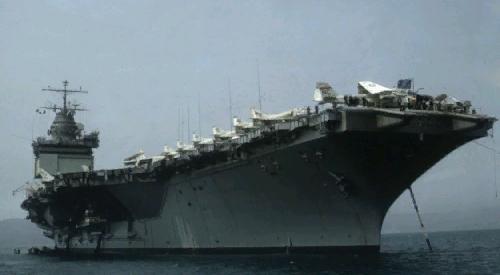
Aircraft Carriers
An Aircraft Carrier is a ship with a long, unobstructed flight
deck that permits takeoffs and landings by high-performance
airplanes. A carrier is in effect a mobile air base. Planes are
stored below deck and brought up and down on elevators. They take
off under their own power or may be launched by catapults. Mirror
landing systems and arresting cables that catch a hook on the
outside of incoming aircraft facilitate safe landings. Decks are
angled so that pilots missing the arresting gear will be able to
go around again without hitting other aircraft. Carriers,
equipped with or capable of carrying missiles, are the heart of
modern striking forces, accompanied by a variety of support
vessels: destroyers and cruisers for protection and supply ships
bearing fuel, ammunition, and food.Carriers are often called
flattops because of their wide, flat decks. The largest oil
tankers are the only ships bigger than aircraft carriers.
Aircraft carriers have only a minimum number of antiaircraft guns
or defensive missiles for protection against enemy planes and
missiles. Carriers usually steam (travel) with other ships.
Cruisers, destroyers, and submarines protect aircraft carriers
from enemy planes, surface ships, and submarines. Such a fleet is
called a carrier task force or battle group.
U.S.S. Enterprise

| The U.S.S. Enterprise, the largest warship in the world, was the first aircraft carrier to be nuclear powered. Its flight deck is over three football fields long, and the ship can accommodate more than 84 airplanes. |
Abraham Aircraft Carrier

| Propeled by nuclear power, the Abraham Lincoln provides a flight deck for high performance planes. By naval standards the ship is very long, but its runway is still shorter than most air strips on land. To compensate for this, incoming planes use hooks on their undersides to catch arresting cables on the ship's deck. |
Back | Home | Copyright Info | About Myself | Last Updated | Contribute an Article